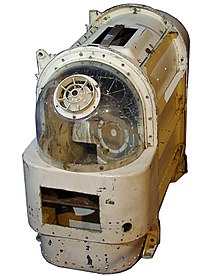
Back Perros del programa espacial soviéticu AST Кучета в космоса Bulgarian সোভিয়েত মহাকাশ কুকুর Bengali/Bangla Perros del programa espacial soviético Spanish Liste des chiens du programme spatial soviétique French Anjing luar angkasa Soviet ID Cani nel programma spaziale sovietico Italian ソ連の宇宙犬 Japanese 소련의 우주견 Korean Suņi kosmosā Latvian/Lettish
You can help expand this article with text translated from the corresponding article in Russian. (November 2022) Click [show] for important translation instructions.
|

| Part of a series of articles on the |
| Soviet space program |
|---|
During the 1950s and 1960s the Soviet space program used dogs for sub-orbital and orbital space flights to determine whether human spaceflight was feasible. These dogs, including Laika, the first animal to orbit Earth, were surgically modified to provide the necessary information for human survival in space. The Soviet space program typically used female dogs due to their anatomical compatibility with the spacesuit.[1] Similarly, they used mix-breed dogs due to their apparent hardiness.
In this period, the Soviet Union launched missions with passenger slots for at least 57 dogs. Some dogs flew more than once. Most survived; those that died were lost mostly through technical failures, according to the parameters of the test. Laika was an exception and was expected to die during her Earth-orbiting 3 November 1957 Sputnik 2.[2]
- ^ Nelson, Amy. "Cold War Celebrity and the Courageous Canine Scout: The Life and Times of Soviet Space Dogs". In Into the Cosmos: Space Exploration and Soviet Culture, edited by James T. Andrews and Asif A. Siddiqi, 136. University of Pittsburgh Press, 2011. doi:10.2307/j.ctt6wrcn2.10.
- ^ Berger, Eric (3 November 2017). "The first creature in space was a dog. She died miserably 60 years ago". Ars Technica. Retrieved 3 November 2017.